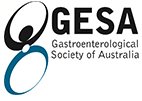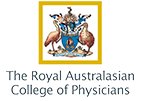Brisbane Endoscopy Services
Why have an Endoscopy?
Most people have heard of a colonoscopy; a procedure where a flexible camera tube is inserted through the back passage allowing imaging and certain procedures to be performed on the bowels and large intestines.
An endoscopy works on the same principle, using a tube to allow your doctor to examine various organs in a minimally invasive way. For many conditions, the same tube may be used to treat the problem on the spot. This avoids the need for open surgery and the risks associated, as well as having a faster recovery time with far less scarring.
A wide range of endoscopies can be performed and whilst they carry less risk than open surgery, specialist training and experience are needed to ensure the best possible outcome. Having a skilled specialist like Dr Nanda perform your endoscopy is the safest and most accurate option, and ensures the best outcome for treatment.
Endoscopy Services & Procedures
1. ERCP:
What is it?
Endoscopic Retrograde Cholangio-pancreatography (ERCP) is a procedure that enables your physician to examine the pancreatic and bile ducts.
- Under sedation, a flexible endoscope, about the thickness of the index finger is placed through the mouth and into the stomach and first part of the small intestine.
- Once at the correct location in the small intestine, a small opening to the bile and pancreatic ducts called the ampulla is identified, and a small plastic tube is passed into this opening.
- Dye (contrast material) is injected and X-rays are taken to examine the ducts of the pancreas and liver.
- Small tools can then be passed through the tube to treat blockages and stones, and take tissue samples for analysis.
Why is it done?
An ERCP is usually performed as a diagnostic procedure to help evaluate conditions of the pancreas and bile ducts.
One major advantage of an ERCP is that it is also used to treat these conditions. Specialised attachments are used in an ERCP to treat specific conditions - balloons and stents can be used to open blockages, whilst snares and baskets can be used to remove stones.
An ERCP is performed under sedation, and local anaesthetic, meaning that you will be awake and breathing by yourself, but very relaxed & drowsy. This procedure can be performed as an outpatient procedure, and discomfort is usually minor, and you generally can resume your diet and regular medications once you have been discharged.
What are the risks?
An ERCP is safe when performed by physicians who have had specific training and are experienced in this specialised type of endoscopic procedure. The best treatment and lowest risks come from physicians with a specialist interest and qualifications in endoscopic procedures such as Dr Nanda.
Complications are rare, but can include:
- Pancreatitis – due to irritation of the pancreatic duct by the X-ray contrast material or the tubing. This is generally mild, though some patients require treatment and a hospital admission.
- Risks common to any procedure with sedation, such as an allergic reaction.
- Irritation to the vein in which medications are given. This is uncommon and usually mild.
If your ERCP includes a therapeutic procedure such as removal of stones or placement of a stent, there are additional small risks of bleeding and perforation. Dr Nanda specialises in these procedures, reducing the risk to a very low level.
What are the benefits?
- ERCP generally provides superior diagnostic information on top of what is provided in a CT or MRI, or capsule endoscopy.
- It is minimally invasive, low risk and well tolerated, being recommended as both first line and gold standard treatment.
- Diagnosis and treatment can be performed at the same time in many cases.
2. Endoscopic Mucosal Resection
What is it:
Gastro-intestinal endoscopic mucosal resection (EMR) is a procedure to remove early-stage cancer and pre-cancerous growths from the lining of the digestive tract.
It is performed using a long, narrow tube equipped with a light and video camera. Depending on what part of the digestive tract needs to be examined, this tube is either inserted through the mouth or the back passage.
EMR is generally performed under sedation & local anaesthetic administered by an anaesthetist. You will feel relaxed and drowsy, but are able to co-operate if required, and are breathing by yourself. The local anaesthetic will make the insertion of the endoscope more comfortable. For some people where being awake is a concern despite sedation, being completely asleep can be an option.
There are a few versions of endoscopic mucosal resection. They are grouped into two general categories: Suction or Lift method. Both require a surgical cut to remove the abnormal tissue.
Why it’s done:
EMR is a less invasive alternative to surgery for removing abnormal tissues from the lining of the digestive tract. Dr Nanda may recommend the procedure to remove certain early-stage cancers or pre-cancerous growths.
In many patients, EMR can achieve long-term cure and avoid a larger surgical procedure.
Some of the conditions that EMR has been used to treat include:
- Upper Digestive Tract:
- Barrett’s Oesophagus
- Oesophageal Cancer
- Gastric Cancer
- Lower Digestive Tract:
- Colonic Polyps
- Colorectal Cancer
What are the risks:
EMR is generally considered a safe procedure, though there are some risks:
- Bleeding: This most common complication (2.5-5.0% of cases) can often be detected and corrected during the procedure.
- Puncture (perforation): There is a slight risk of a puncture through the wall of the digestive tract, depending on the size and location of the lesion that is removed. If it occurs, it requires surgery to be repaired.
- Narrowing (stricture): Removing certain oesophagus lesions increases the risk of scarring that narrows the oesophagus, which may lead to difficulty swallowing and require further treatment.
These risks are lowest when using a specialist with specific training in endoscopic procedures, preferably advanced sub-speciality training such as Dr Nanda.
3. Endoscopic Ultrasound
What is it?
Endoscopic Ultrasound (EUS) is a minimally invasive procedure to diagnose and assess gastrointestinal diseases. A special flexible endoscope, passed through your mouth or back passage, uses high-frequency sound waves to produce detailed images of the lining and walls of your digestive tract. Nearby organs such as the pancreas, liver and lymph nodes can also be imaged with this procedure.
When combined with a procedure called fine-needle aspiration, EUS allows a skilled specialist like Dr. Nanda to sample fluid and tissue from the gastrointestinal tract for analysis. In certain cases, EUS with fine-needle aspiration can be a minimally invasive alternative to exploratory surgery.
EUS is performed on an outpatient basis and is well tolerated by most people.
Why is it done?
EUS is used to:
- Find the cause of digestive tract symptoms such as abdominal pain
- Determine the extent of diseases such as:
- Cancer of the colon, oesophagus, pancreas, stomach.
- Bile duct stones
- Pancreatitis and pancreatic cysts
- Evaluate findings from imaging tests such as CT scan or MRI
EUS can also be used to provide treatment, allowing for:
- Drainage of cysts, and other abnormal collections of fluid in the abdomen
- Precise targeting for delivering medication directly into the pancreas, liver and other organs.
What are the risks?
EUS is generally very safe when performed by an experienced specialist such as Dr Nanda and his team.
Dr. Nanda will discuss in detail the nature and risks of complications from EUS. The most common risks are those associated with the fine-needle aspiration component.
General risks may include:
- Bleeding
- Infection
- A tear or perforation in the intestinal wall
- Pancreatitis – if fine-needle aspiration of the pancreas is done.
What are the benefits?
The benefits of endoscopic ultrasound include:
- Minimal risk
- No need for external incisions, and often avoiding major surgery
- Quick recovery
- Enhanced diagnostic information about the gastro-intestinal tract
Choosing the right specialist
All procedures carry a degree of risk, so having a qualified surgeon perform your procedure improves the chance of the best outcome possible.
Dr Nanda has a specialist interest in inflammatory bowel disease, having qualifications from the Gastroenterological Society of Australia, the American Gastroenterological Association, the Royal Australian College of Physicians and the European Society of Gastrointestinal Endoscopy as well as being senior lecturer at the University of Queensland.
His private gastroentereology practice is based in Brisbane city. Dr Nanda is also a Staff Specialist Gastroenterologist at the Mater Hospital Brisbane and QE II hospital, as well as offering services to Rockhampton through the Mater Hospital Rockhampton.
For advanced endoscopic specialist care and long-term support from a consultant with specific training and experience, book an appointment with Dr Nanda today.
St Andrew's Sessional Suites
Level 6, Suite 5
St Andrew's War Memorial Hospital
457 Wickham Terrace
Spring Hill, QLD 4000
Phone: 07 3554 0282
Fax: 07 3539 9811
Email: admin@drknandagastro.com.au
Opening Hours:
Monday to Friday, 8:30 AM-4:30 PM
Mater Private Hospital Brisbane
301 Vulture Street
South Brisbane, QLD 4101
Phone: 07 3554 0282
Fax: 07 3539 9811
Email: admin@drknandagastro.com.au
Opening Hours:
Monday to Friday, 8:30 AM-4:30 PM




